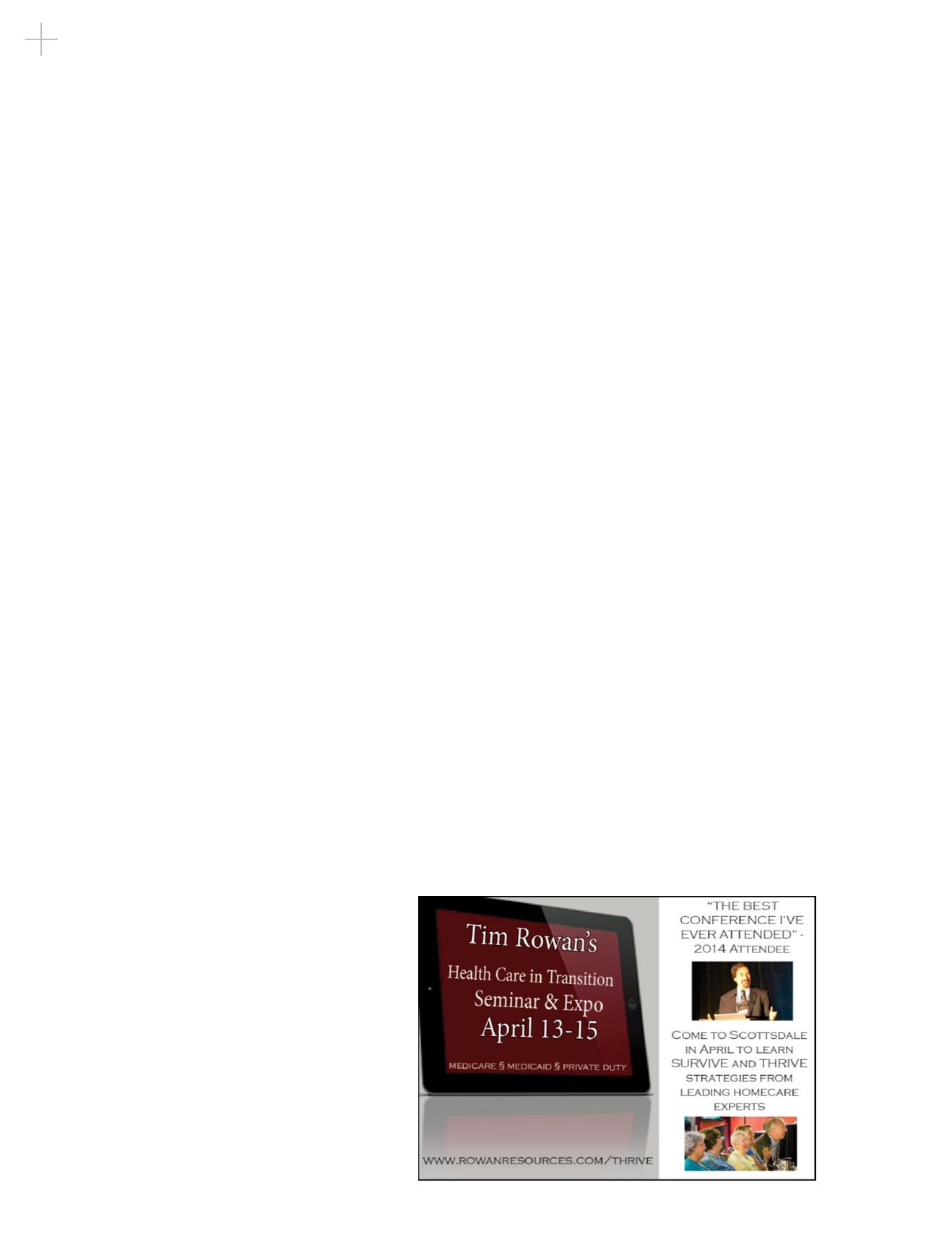
10
The Home Care Association of Florida
FEATURE
These changes are brought about because of
changes in income, changes in employment,
or changes in family composition.
On a national basis, in 2014 it is estimated
that 29.4 million Americans changed
coverage systems in the course of the
year (not simply during routine open
enrollment periods). A typical Medicaid
beneficiary is covered for only 4/5 of a year
and lacks coverage for the residual 1/5 of
the year. While the Centers for Medicare &
Medicaid Services and the Medicaid CHIP
(Children’s Health Insurance Program)
Payment and Access Commission
(MACPAC, Congress’s Medicaid advisory
panel) has recommended legislation that
would support the adoption of twelve
month continuous eligibility policies,
these have not yet been enacted in Florida.
A recent George Washington University
study found that Florida lagged behind
national enrollment continuity ratios at
76.4% of Florida Medicaid beneficiaries
compared to 81.2% nationally. This
makes Medicaid Churn a big issue for
Florida Medicaid providers. In addition
to elibility based Medicaid Churn, in
Florida we are challenged with managing
Medicaid Managed Care Organization
(MCO) Churn as our state continues to
adopt Managed Long-Term Services and
Supports (MLTSS) as beneficiaries move
from state managed services to MCO
managed care. For these beneficiaries,
we have to monitor both their general
eligibility qualifiers as well as their
voluntary or involuntary movement
between managed care plans in Florida.
For home care providers in Florida,
the crucial questions are:
• How are patients enrolled in
managed care?
• Is this enrollment passive or active?
• What are the beneficiaries’ rights
to move within plans?
The recent Florida MLTSS rollout started
in August of 2013 and ended in July of
2014. Beneficiaries were given four months
notice to self-select and were automatically
enrolled if they had not chosen a plan
within thirty days of enrollment. Patients
were allowed to switch plans within the
first ninety days of enrollment for “good
cause rules” such as lack of access to care
or quality of care issues.
Home care providers have seen an
acceleration of beneficiaries moving
between health plans and even qualifying
for Florida Medicaid. As we know, even
if a home care provider has received
authorization to provide home care
services, that is not a guarantee of payment
if it is determined that, as of the date of
home care service delivery, the patient
was no longer eligible for plan benefits.
Because this can happen at any time (not
just at the beginning of a year or calendar
month), it is increasingly important to be
proactive in determining eligibility. This
means, before servicing the patient on
a daily basis, ensure that the patient is
still eligible for service on the plan that
you have received authorization for. We
must start thinking and behaving like a
physician’s practice. More than likely, the
last time you visited your physician’s office,
you did not see the doctor until they had
verified your benefits and perhaps even
requested your co-pay!
In the past, the typical home care provider
was manually verifying patient eligibility
by either calling the provider hotline or
attempting to verify via a provider internet
resource site. This was exceptionally time
consuming to do on a monthly basis, and
virtually impossible to do on a daily basis.
Today, you have the ability to conduct
batch eligibility verifications on all of your
patients in one single automated fashion.
By integrating a batch verification tool with
your agency’s scheduling/billing software,
you can ensure seamless and cost-effective
prevention of lost claims. Historically
you would have to pay a pre-inquiry fee
to conduct each eligibility check, but the
trend has moved toward a flat fee per NPI
number for unlimited eligibility verifications
as well as claim submissions. Now that
the technology is in place to automate
this process at a nominal fee, home care
providers should consider adopting an
eligibility verification process to help your
agency manage Medicaid Churn.
Until we have effective regulatory or
legislative action that provides for twelve
month continuous eligibility, or a
framework of health plans accepting prior
authorizations and other cross-market
incentives to ensure smooth transitions of
care between coverage options, Medicaid
Churn will be here to stay.
Brad Caldwell is Executive Vice President of Sales
for ContinuLink, a sophisticated and scalable
web-based software solution for home health
care agencies that is part of the Procura Group
of Companies. Thank you to ContinuLink/Procura
for being a Silver Sponsor of HCAF’s 2015 Winter
Mini Conference. For more information and to thank
them for their support, visi


